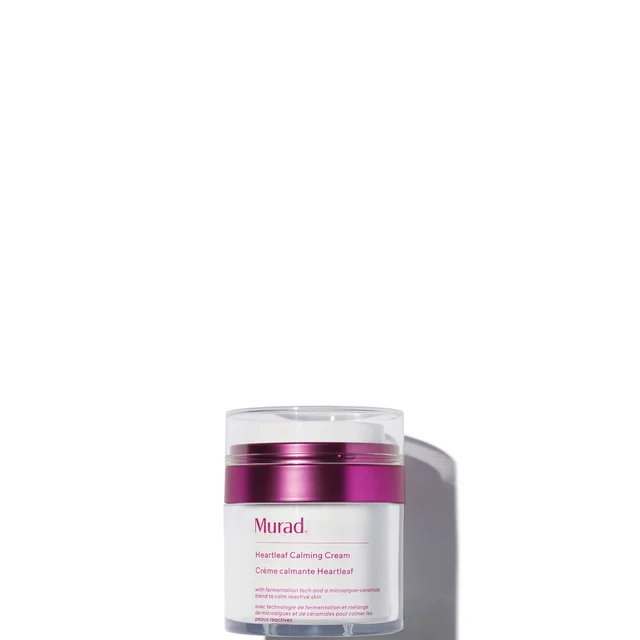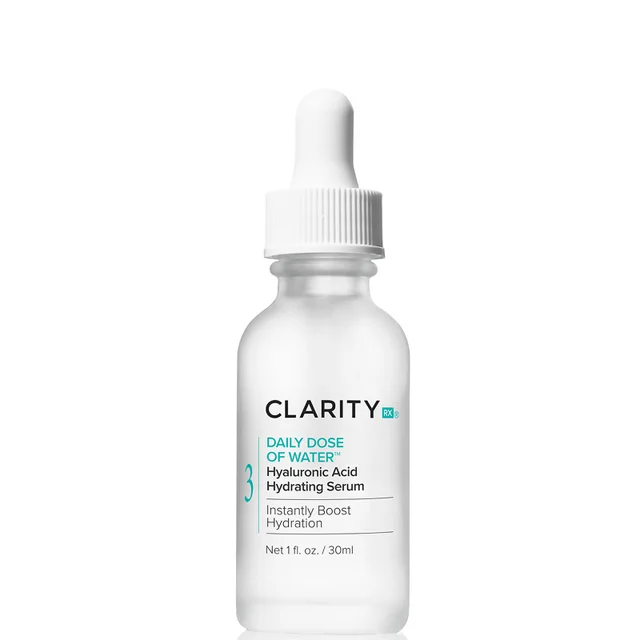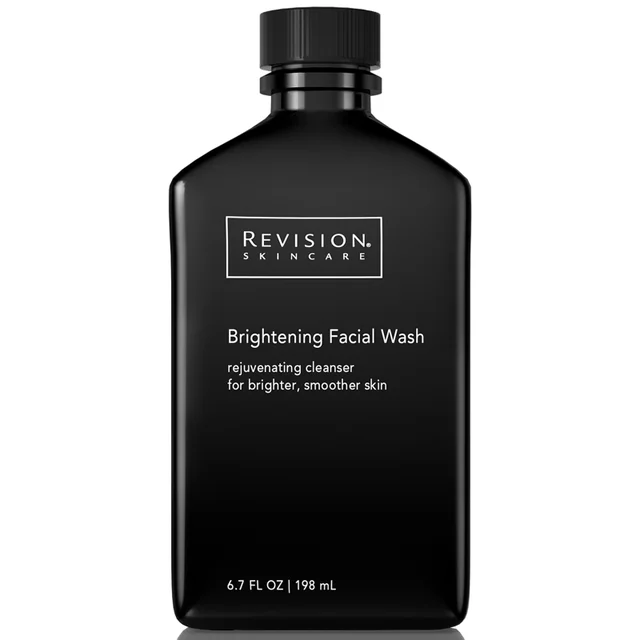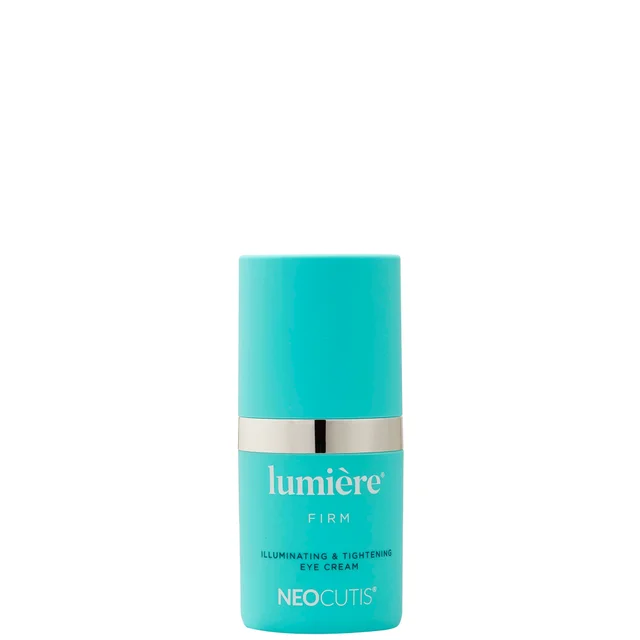What is My Skin Type? A Derm-Approved Guide on How to Determine Your Skin Type
If you’ve been around the beauty space for some time, then you understand that although we often turn to experts and other beauty fans for advice, curating a skincare routine is ultimately an intimate and personal journey. Thousands may hail a serum as an absolute holy grail, but that doesn't guarantee it will work the same way for your skin. Why? Because every skin has its own unique needs, and the first step to achieving that dream complexion is knowing exactly what your skin type is. “But what is my skin type?” you ask? We’re here to help. Below, we break down everything you need to know to identify which skin type you’re rocking and how you can make sure it always stays in top shape.
Meet the Expert
- Dr. Ashley Magovern - Board-certified dermatologist and member of Dermstore’s Medical Advisory Board
What Are the Main Skin Types
The skin we’re born with generally falls under one of five major skin types, and this is primarily determined by genetics. However, other factors, including your environment, diet, and lifestyle habits, can also affect the way your skin behaves. The five main skin types are:
1. Oily or Acne-Prone: This skin type is notable for excess sebum production, which often leads to extra shine and breakouts.
2. Sensitive: Sensitive skin is easily triggered by weather, irritants, and certain products and ingredients, leading to redness, irritation, and itching.
3. Dry: Dry skin lacks moisture and often struggles to retain enough moisture, which causes tightness, dullness, and flakiness and makes it prone to early signs of aging.
4. Combination: Having combination skin means your skin has parts that are oily (especially the T-zone) while other areas like your cheeks feel dry and parched.
5. Normal: Normal skin is balanced skin, never feeling to dry or too oily.
Still confused about your skin type? According to Dr. Ashley Magovern, board-certified dermatologist and member of Dermstore’s Medical Advisory Board, there’s a quick trick to make it easier for you to pinpoint your skin type. “Wash your face with a gentle cleanser and wait an hour, then observe how your skin feels,” she says. “Tight and flaky? You have dry skin. Shiny all over? You have oily skin. Shiny in the T-zone but dry everywhere else? You have combination skin. Frequent breakouts and sensitivity? You have acne-prone skin.”
How to Know Your Skin Type
Skin Type: Oily or Acne-Prone Skin
What is Oily Skin?
Oily skin is easy to spot because it makes your skin feel and look slick, shiny, and greasy rather than dewy. This overproduction of sebum causes frequent breakouts, clogged pores, blackheads, and whiteheads.. Although sebum production is essential for hydration and maintaining the integrity of the skin barrier, too much of it can also turn your pores and skin into a hotbed for acne-causing bacteria. That said, oily skin can also be a symptom of underlying concerns like dryness. Parched skin forces your sebum glands to compensate for the lack of moisture and produce more oil than necessary.
To deal with oily skin, it’s crucial to wash your face twice daily to get rid of all the unwanted grease. You may also need to rethink your product choices and make sure you’re using formulas that are non-comedogenic, oil-free, lightweight, and water-based to avoid weighing down your skin and overwhelming your pores.
How to Know If You Have Oily Skin
You have prominent or enlarged pores around the nose and cheeks - Your makeup slips or melts away quickly
- You often experience breakouts and deal with blackheads and whiteheads.
- Your skin feels thick or congested.
Key Ingredients for Oily Skin
Niacinamide: Not only is niacinamide known for its nourishing and antioxidant properties, it also puts in the work when it comes to regulating oil production and minimizing pores. Salicylic Acid: As a chemical exfoliant, salicylic acid goes deep inside the pores to get rid of excess oil, dead skin cells, and other impurities. Kaolin or Bentonite Clay: Often found in masks, kaolin and bentonite clay absorb excess oil and help in detoxifying the skin, keeping your complexion fresh and shine-free.
Best Products for Oily Skin
SkinCeuticals Silymarin CF
Your skin’s new best friend, SkinCeuticals Silymarin CF is a powerhouse serum that combines vitamin C with silymarin to fend off oil oxidation–the pesky and sneaky culprit behind breakouts. Not only does it brighten your complexion, it also keeps post-acne marks and pigmentation concerns at bay, making it ideal for oily and blemish-prone skin.
Kate Somerville Eradikate Cleanser
If you’re looking for a cleanser that blends effective cleansing and gentle care, then this is for you. Infused with sulfur and honey, this daily foaming wash soothes and balances your skin while protecting it from acne–both existing ones and those that are yet to happen. And all these without having to worry about dryness!
111SKIN Anti Blemish Booster Serum
Time to level up your skincare game with potent booster serum designed to tackle imperfections and restore balance to your complexion. Whether mixed with your go-to moisturizer or on its own, this skin wonder imparts a clearer, calmer, and radiant visage–making it your best ally for those unpredictable skin days.
Jan Marini Bioglycolic Facial Cleanser
Reveal a fresher complexion with this non-foaming cleanser that harnesses the skin-renewing power of glycolic acid to gently exfoliate and cleanse your skin’s surface. Its gentle, soap-free formula makes for a worry-free daily cleansing that ensures hydration remains intact while effectively getting rid of all impurities and excess oil.
Therabody TheraFace Mask
This LED skincare mask is designed to deliver deep hydration and rejuvenation for skin that craves professional-level indulgence and pampering. Utilizing 648 medical-grade LED lights, it improves the most common signs of aging, refines tone and texture concerns, and promotes an overall radiant and luminous appearance.
Skin Type: Sensitive
What is Sensitive Skin
When your skin tends to act up at the slightest provocation, then there’s a good chance you have sensitive skin. Sensitive skin is easily triggered, and exposure to extreme weather, harsh ingredients, fragrance, and pH imbalance often sparks redness, a feeling of discomfort, burning or stinging, and itching.
In some instances, sensitive skin may also be dealing with inflammatory skin conditions like rosacea and eczema, so paying close attention to your skincare products is key. Opt for hypoallergenic, paraben-, sulfate-, and fragrance-free products with the gentlest formulations to avoid provoking highly reactive skin. You’ll also want to make sure your skincare routine includes soothing, cooling, and anti-inflammatory ingredients to calm existing irritation and discomfort.
How to Know If You Have Sensitive Skin
- Your skin turns red or gets blotchy when introduced to new ingredients and products or exposed to weather changes.
- Applying skincare products often cause tingling, burning, or itching sensations.
Your skin is easily irritated by products that contain fragrances, alcohol, and potent active ingredients like retinol and exfoliating acids. - You’re also coping with conditions like dermatitis, eczema, or rosacea.
Key Ingredients for Sensitive Skin
Ceramides: Ceramides strengthen and protect the skin barrier, calm inflammation, and prevent moisture loss, which are all crucial when you have sensitive skin. Aloe Vera: A sensitive skin savior, aloe vera hydrates, soothes, and comforts inflamed and irritated skin. Colloidal Oatmeal: Colloidal oatmeal works great in reducing redness and relieving itching. It’s a must especially for skin conditions like eczema.
Best Products for Sensitive Skin
SkinMedica Essential Defense Mineral Shield Broad Spectrum SPF 32 (Tinted)
With its broad-spectrum formula, this tinted sunscreen specifically formulated for post-procedure and sensitive skin uses 100 percent mineral filters, green tea, and caffeine, ensuring gentle yet complete protection against ultraviolet rays. Not to mention, it features a lightweight formula that blends seamlessly, imparting a natural-looking shade without irritating delicate skin.
Murad Sensitive Skin Heartleaf Calming Cream
Calming and refreshing, this ultra-gentle, hypoallergenic, and comforting cream boasts of soothing and anti-inflammatory ingredients that instantly relieves redness, irritation, and signs of sensitivity, including dryness, itching, stinging, and tightening.
Avène Cicalfate+ Restorative Protective Cream
Designed to soothe and repair skin that yearns for healing and protection, this cream ensures quick recovery from irritation with a non-greasy formula that forms a protective barrier, calms itching, and reduces the look of scarring. Plus, it’s infused with rejuvenating thermal water to ensure your skin stays refreshed and hydrated.
ClarityRx Daily Dose of Water Hyaluronic Acid Hydrating Serum
Featuring hyaluronic acid, this hydrating serum is the perfect daily moisture for skin that needs a gentle touch to quench dryness, soothe discomfort, and plump up fine lines.
FOREO LUNA 4 Smart Facial Cleansing and Firming Massage Device (Sensitive Skin)
If you’re looking to elevate your skincare routine, then look no further. This two-in-one skin massager uses 16 adjustable pulsations to gently lift away deep-seated impurities and excess oil while enhancing product absorption and firming the skin.
Skin Type: Dry
What is Dry Skin?
Dry skin occurs when there isn’t enough moisture in the outer layers of the skin, which results in a rough texture, flaking, dullness, tightness, premature skin aging, and increased sensitivity to environmental aggressors. It is typically a result of genetics, but other skin types may also experience bouts of dryness especially when exposed to harsh ingredients, super potent actives, weather or environmental changes, and hormonal imbalance.
Dry skin, however, is not the same as dehydrated skin. Although these terms are often used interchangeably, dry skin lacks oil while dehydrated skin isn’t getting enough water. However, both require moisture-loving ingredients like ceramides, peptides, glycerin, and hyaluronic acid to restore the skin’s healthy appearance.
How to Know If You Have Dry Skin
- Skin feels tight, especially after cleansing.
- Noticeable flaking, rough patches, and uneven texture.
- Your skin appears dull and lacks a natural glow.
- Your fine lines and wrinkles are more noticeable and pronounced.
- You often need to apply your moisturizer more than once as your skin absorbs it quickly.
Key Ingredients for Dry Skin
Hyaluronic Acid and Glycerin: These humectants draw moisture from the air and deliver it to the surface and deeper layers of the skin for instant plumping and hydration. Ceramides: Not only are ceramides responsible for maintaining skin barrier health, they also help create a seal that locks in moisture and prevent transepidermal water loss (TEWL). Squalane: Squalane is a lightweight oil that mimics and replenishes the skin’s natural moisture.
Best Products for Dry Skin
iS Clinical Reparative Moisture Emulsion
Bask in intense hydration with this lightweight moisturizer that penetrates deeply and provides long-lasting moisture without that icky, greasy feeling. But that’s not all. Enriched with peptides, marine extracts, and antioxidants, it also protects your skin from environmental stressors while smoothing your complexion and refining fine lines.
Olga Lorencin Skin Care Heal The Need
Formulated to address dryness and sensitivity while promoting a calm and balanced skin, this serum is ideal for dry and irritated skin that craves soothing and comfort. Infused with lipopeptides, antioxidants, and ceramides, it works hard to restore your skin’s natural barrier, hydrate and plump the skin, and provide relief for eczema- and redness-prone skin.
RéVive Rescue Balm Overnight Mask
Expertly crafted to deliver quick relief and recovery to dry and damaged skin, this rich, luxurious mask works overnight to deeply moisturize, restore, and rejuvenate dry skin. All thanks to its nourishing blend of ingredients that includes peptides, adaptogens, and superfoods that work together to ensure you greet the day with supple, glowing skin.
Senté Dermal Repair Cream
With its hydrating and restorative formula, this advanced repair cream provides deep hydration while promoting skin elasticity and firmness, minimizing fine lines and wrinkles, enhancing tone and texture, and calming redness and sensitivity.
Dermalogica Multivitamin Power Recovery Cream
Infused with vitamins A, C, E, pro-vitamin B5, niacinamide, and astaxanthin, this revitalizing cream works hard to promote skin recovery and hydration. It helps improve tone, elasticity, and texture while strengthening the skin barrier, making it a must-have for dry skin seeking a radiant boost.
Skin Type: Combination
What is Combination Skin?
Like what the term suggests, combination skin exhibits both dryness (on the cheeks) and oiliness (mainly on the T-zone or your forehead, nose, and chin). Because of this, it can be a little tricky to tackle sometimes, especially when external factors (like lack of sleep or weather changes) cause your skin to feel oilier or drier than usual.
When you have combination skin, finding the one moisturizer (or cleanser) to rule them all is definitely not an easy task. Fortunately, you can always opt to use different products to target each specific part, especially when you’re noticing increased oiliness or dryness. To do this, use a richer and more hydrating cream on the drier area of your face, like the cheeks, and switch to a lighter, oil-free, or water-based moisturizer for your T-zone. If you’d rather keep your routine simple, then choose gentle formulations with balancing ingredients that dial down the grease factor without stripping your skin.
How to Know If You Have Combination Skin
- You have an oily T-zone despite your cheeks feeling dry or normal.
- Your skin reacts to weather and season changes, becoming oilier in the summer and drier in winter.
- When you experience breakouts, they mostly occur in the T-zone or oily areas.
- Your current skincare products don’t seem to work for your entire face.
Key Ingredients for Combination Skin
Hyaluronic Acid: Hyaluronic acid amps up the skin’s hydration levels without making the skin feel greasy. Niacinamide: Multitasking niacinamide helps regulate sebum production while improving rough and uneven texture. Green Tea: Aside from being a powerhouse antioxidant, green tea also aids in keeping oil production under control, soothing irritation, and nourishing dryness. Jojoba Oil: With its light and non-greasy feel on the skin, jojoba oil–which mimics the skin’s natural oils, making it absorb faster and easier–moisturizes skin without clogging and overwhelming pores.
Best Products for Combination Skin
Obagi Medical Nu-Derm Toner
Making sure your skin stays balanced is key when you have combination skin, and that’s exactly what this hydrating facial toner is all about. Packed with sage, witch hazel, aloe vera, and hyaluronic acid, it adjusts your skin’s pH to its optimal level and prepares it for the rest of your skincare routine while removing excess oil and impurities without stripping your skin.
SK-II Facial Treatment Essence (Pitera Essence)
This luxurious treatment essence brings you closer to achieving your best skin ever with its ultra-nourishing formula that blends 90 percent pitera, vitamins, minerals, and amino acids. It improves tone and texture, rebalances oily and dry areas, gently exfoliates, and promotes natural skin renewal, making it ideal for combination skin.
Jan Marini C-ESTA Face Cream
Vitamin C, green tea, vitamin E, and hyaluronic acid take center stage in this rejuvenating face cream that brightens, firms and tightens, improves elasticity and fine lines, protects against free radicals, and floods your skin with deep hydration, leaving you with a revitalized, radiant complexion.
Revision Skincare Brightening Facial Wash
Illuminate your complexion with this brightening facial wash that boasts of a hardworking yet gentle blend of skin-renewing ingredients, including salicylic acid, glycolic acid, vitamin C, and vitamin E. It gently removes impurities, dead skin cells, and excess oil while brightening dull skin and locking in and replenishing moisture.
Epionce Lytic Gel Cleanser
Designed to remove oil and impurities without over-drying your skin, this cleanser helps regulate sebum production, rebalance pH levels, and preps the skin to better absorb leave-on treatments and other active ingredients.
Skin Type: Normal
What is Normal Skin?
If you have normal skin, it’s safe to say your skincare journey is a lot less complicated. Normal skin is well-balanced, never too dry or too oily. It adjusts fairly well to new products and has a good tolerance for heavy-hitting ingredients. And while normal skin can still experience the occasional breakout, it usually stays drama-free.
That said, although having normal skin makes you the lucky owner of the ideal skin type, it still needs proper TLC. After all, good genes can only do so much, and taking your skin for granted can quickly reverse your good fortune. Aside from covering the basics–cleansing, a hydrating antioxidant serum, and moisturizing–you’ll also want to make sure you prioritize sun protection during the day and add an anti-aging nighttime serum or treatment for those concerns that crop up from time to time.
How to Know If You Have Normal Skin
- Your skin feels balanced, not overly oily or excessively dry.
- Your skin has a smooth and even texture.
- You don’t have clogged, enlarged, or noticeable pores.
- Your skin looks glowy instead of greasy.
- You rarely experience breakouts, sensitivity, or unwanted reactions.
Key Ingredients for Normal Skin
Vitamin C: Vitamin C is a must-have antioxidant that brightens pigmentation issues and protects against environmental stress. Peptides: Peptides support the production of collagen, helping improve elasticity and firmness. Hyaluronic Acid: Humectants like hyaluronic acid can help keep hydration levels up and leave your skin with a plump, dewy, and youthful appearance.
Best Products for Normal Skin
PCA Skin Clearskin
Specially formulated for normal to oily skin, this lightweight moisturizer delivers a calming and soothing relief for those days when your skin is feeling a little under the weather. Infused with niacinamide, borage seed oil, cucumber extract, it hydrates, rebalances, and reduces redness without clogging pores and risking a breakout.
BIOEFFECT Micellar Cleansing Water
There’s no better way to kick off your skincare routine than with this deep-cleaning yet ultra-gentle micellar water. With pure Icelandic water in its helm, it removes even the most clingy makeup, daily impurities, and residue while hydrating and revitalizing the skin.
Neocutis Lumière Firm Illuminating & Tightening Eye Cream
For that ultra-delicate and extra sensitive eye area, this brightening and lifting eye cream combines growth factors, peptides, caffeine, and vitamin C to reduce the appearance of fine lines, puffiness, and dark circles while boosting the body’s own production of collagen and hyaluronic acid.
SkinCeuticals C E Ferulic
As the holy grail of all holy grails, this cult-fave vitamin C serum is universally loved for its potent blend of antioxidants, which combines 15 percent pure vitamin C, vitamin e, and ferulic acid, to quench free radicals and amp up the skin’s natural defense against environmental damage. With regular use, expect to be greeted by a more glowing, firmer, and younger-looking complexion.
Related Article: Which SkinCeuticals Vitamin C Serum Is Right for You, According to an Esthetician
EltaMD UV Daily Broad-Spectrum Tinted Moisturizer SPF 40
This sunscreen consistently ranks high in our list of best-sellers for a reason. Not only does it have a broad spectrum formula that delivers total sun protection, it also pampers the skin with essential moisture and protection to stay hydrated throughout the day. Our fave part? Its subtle tint blends effortlessly and enhances your natural complexion, making it perfect for that bare-faced, effortlessly polished look.
Related Article: Reviewed: EltaMD UV Clear Sunscreen Collection
The Bottom Line
When it comes to skincare products, we know that the best ones are not those with the most luxurious packaging or celebrity approvals–it’s one that actually works for your skin. And finding the one–whether a cleanser, serum, or moisturizer–can only be made possible when you know your skin type. But is it really that important to get into specifics, given that plenty of skincare products are formulated for all skin types, anyway? Absolutely.
Whether you have oily, dry, sensitive, combination, or normal skin, understanding the unique needs and demands of your own skin is crucial in choosing the right ingredients to maintain its balance, target concerns effectively, and adapt to all the changes your skin undergoes.

Janeca Racho is a Journalism graduate with over 15 years of writing experience. After getting her start in public relations and advertising, she made the switch to freelance writing and began working for various lifestyle, fashion, and travel brands. Her love for all things skincare has led her to beauty reporting and research for the last ten years. Writing for several hair and beauty blogs, she reports on anti-aging staples, trending brands and products, must-have ingredients, and health and wellness.
































